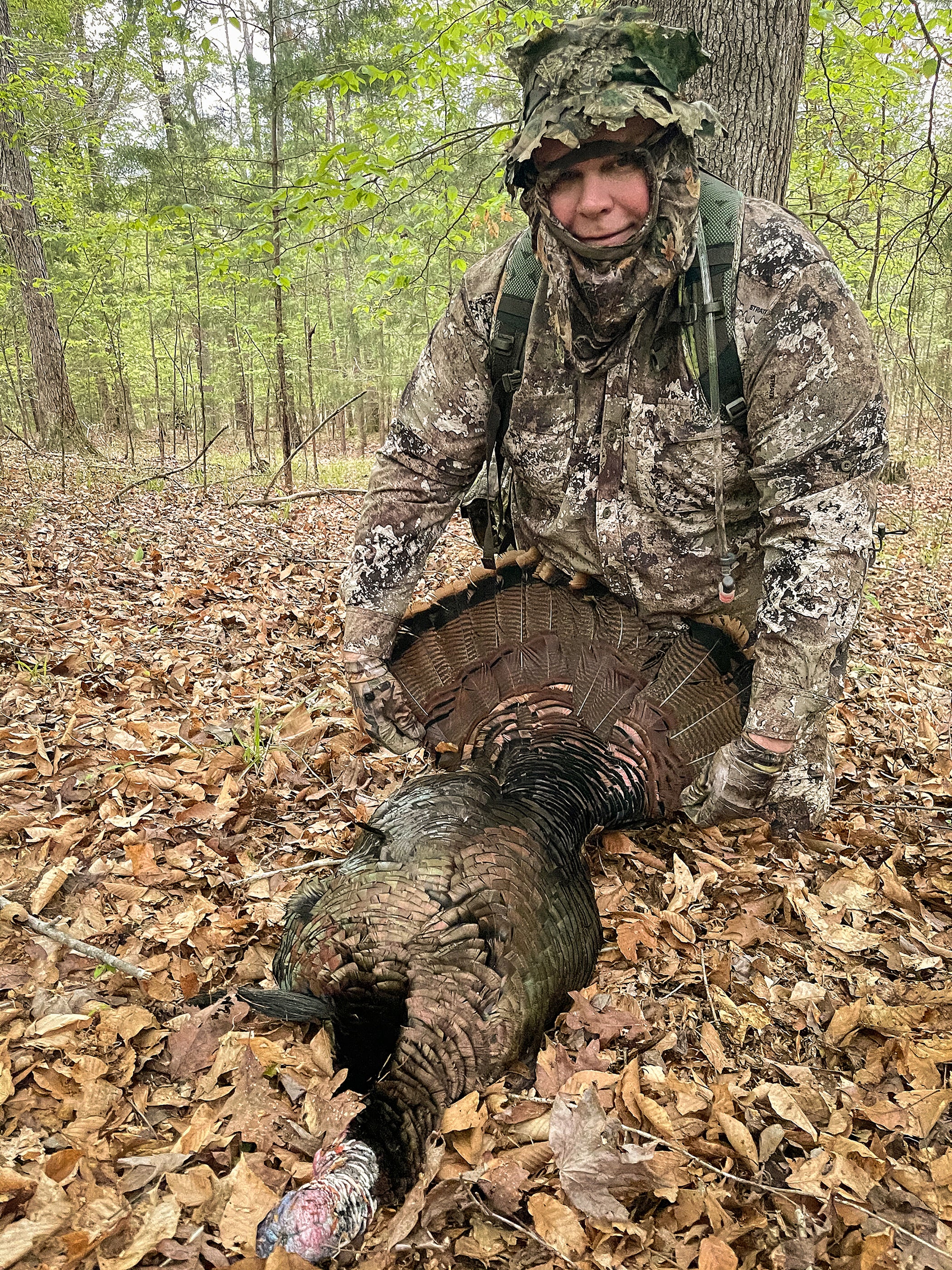By DAVID RAINER, Alabama Department of Conservation and Natural Resources
One of the motivational factors for new hunters discovered by the Alabama Department of Conservation and Natural Resources’ (ADCNR) Wildlife and Freshwater Fisheries (WFF) Division is a quest for organic protein.
Individuals who participate in WFF’s Adult Mentored Hunting Program hunts often rank providing meals prepared with wild game for them and their families high on the priority list.
That motivation is what prompted David Melton of Huntsville to search for hunting opportunities after transferring from his Lockheed job in California to Alabama.
Although he grew up near Houston, Texas, he had not been introduced to hunting by friends or family.
“I’m from the suburbs,” Melton said. “I’m not a country boy, to be honest. My dad was not into hunting.”
After graduating from the University of Texas-Austin, he went to work for Lockheed and lived in California for 14 years.
“I transferred to Huntsville two years ago, and I’m quite happy,” Melton said. “After living in California, especially the last few years, I realized how unreliable our food supply can be when things disappear from the grocery store shelves.
“I was thinking about that song from Hank Williams Jr., ‘A Country Boy Can Survive.’ I was thinking, ‘There’s wisdom in that song.’ I did not grow up with these skills, but I’m going to find some country boys to teach me. That was my attitude.”
His quest began last year during turkey season with a Google search, and he found that Casey’s Hunting Camp in the heart of the Alabama Black Belt had an opening. Although the camp is not associated with the WFF Adult Mentored Hunting Program, Casey’s has seen an increase in new hunters. Melton booked the hunt for the last weekend of the 2022 season. Unfortunately, the gobblers weren’t cooperative, but it fueled a desire to try again this year.
“I liked the family,” Melton said. “They were just great people. I said I’d come back and hunt with them again, and they offered the first weekend of the season this year. The first day of the season, it was hot that day. We were at the top of a ridge, and we could hear the turkeys gobbling at the base of the ridge. We set up three times and called to them. They would gobble at us, but they wouldn’t come. They were gobbling like crazy, like machine guns, but they wouldn’t come.
“That night as we were strategizing, we knew we had to get down to where they were. Bright and early the next morning, we head down to the bottom of the ridge.”
However, a big line of thunderstorms was on the horizon, increasing the urgency to get a gobbler within range as soon as possible. Charles Casey and his brother, Bill, were Melton’s guides for the weekend.
“Charles is calling and sitting next to me because I’m the inexperienced one and need guidance,” Melton said. “I see the turkey first. It’s directly at my 12 o’clock. I’m sitting with my back to the tree and using my left knee to brace the shotgun.
“I got caught by surprise. I was expecting him to show up in full strut. But what I saw was a thin profile. I thought it might be a hen. I whispered to Charles, ‘Is that a male.’ He said, ‘Yes, I can see the beard.’ It occurred to me I had made a grave error by looking for a fan.”
Then Melton worried that the gobbler might be a jake, a juvenile, but Charles assured him it was a mature gobbler.
“It was still pretty dark, and we were under tree cover,” Melton said. “I asked Charles if I should fire, and he said, ‘Yes.’ I was trying to sight in, and I was amazed at just how small that head looked at 40 yards. It started moving to my right. I don’t have enough flexibility to keep that shotgun on my knee, so I raised the shotgun offhand. I’ve got about one second left before he’s going to duck back down the hill. So, I pulled the trigger and nailed him.
“I’m not going to lie, I’m pretty proud of that shot. That’s the most difficult shot I’ve ever made in my life. Thank God for that one. I was praying for one turkey, and he came right to me.”
In 2022, Melton purchased a turkey choke for his shotgun designed for the Winchester Longbeard XR shells, and the Caseys had helped him pattern the gun on a turkey target before the hunting began.








